John Ronald Reuel Tolkein, an English writer, poet, philologist, and scholar, is credited for creating one of literature’s most epic and comprehensive realms. The Hobbit and The Lord of the Rings are only the beginning. For instance, the two comfort-loving Hobbits, Bilbo and Frodo Baggins, as well as dragons and wizards, are set during Tolkein’s Third Age.
From this, one can deduce that centuries of history had already passed by the time everyone became familiar with Arda and its people. Tolkien’s work in The Lord of the Rings gave us several impressive beasts and monsters that are both strong and powerful. He used dragons and werewolves as well as other iconic creatures from legend. He also came up with a lot of them. We will speak about ten terrible monsters from The Lord of the Rings in today’s video.
WATCHER IN THE WATER
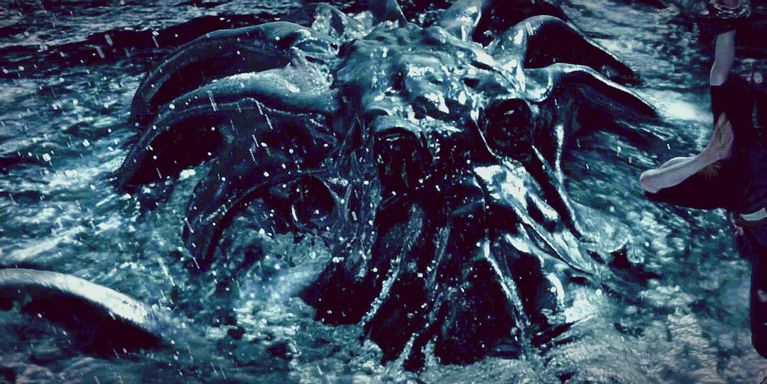
The Watcher in the Water was a terrible and unfathomable monster with numerous tentacles that lived in a sluggish pool or lake near Moria’s West-gate, which J.R.R. Tolkien described as “… a black, quiet lake” constructed by damming the Sirannon river. The water had steadily grown deeper and crept closer to the Doors of Durin, leaving only a small path where the High Road had previously enabled passage between Ost-in-Edhil and Khazad-dûm many years earlier in the Second Age.
Some said that the dam was built over many decades by the monster itself. The Watcher was assumed to have come from underneath Moria since Gandalf observed that “ancient, fouler monsters than Orcs” dwell in the world’s deep regions. When the Dwarves sought to recolonize Moria, the Watcher devoured him when his scouting group visited the West Gate.
The Watcher in the Water appears as a highly realistic computer-generated monster in Peter Jackson’s, The Fellowship of the Ring. The Watcher is disturbed in the film by Meriadoc Brandybuck and Peregrin Took, who toss pebbles in the lake to pass the time while Gandalf tries to find out the password to enter Moria.
In either version, the Watcher is already stirred by the time Frodo and Gandalf solve the riddle of the Door. Despite Samwise Gamgee’s attempts to defend him, it captures Frodo and carries him into the air. The remainder of the Fellowship, who are attempting to harm the Watcher’s numerous serpentine tentacles, save him.
When Frodo is hurt, the Watcher abandons him, and he is captured by Boromir. As the Fellowship of the Ring flees into the Mines of Moria, Legolas shoots the Watcher in the eye. The Watcher breaks down the gateway just as they get inside, and the road out is blocked by falling boulders.
SHELOB
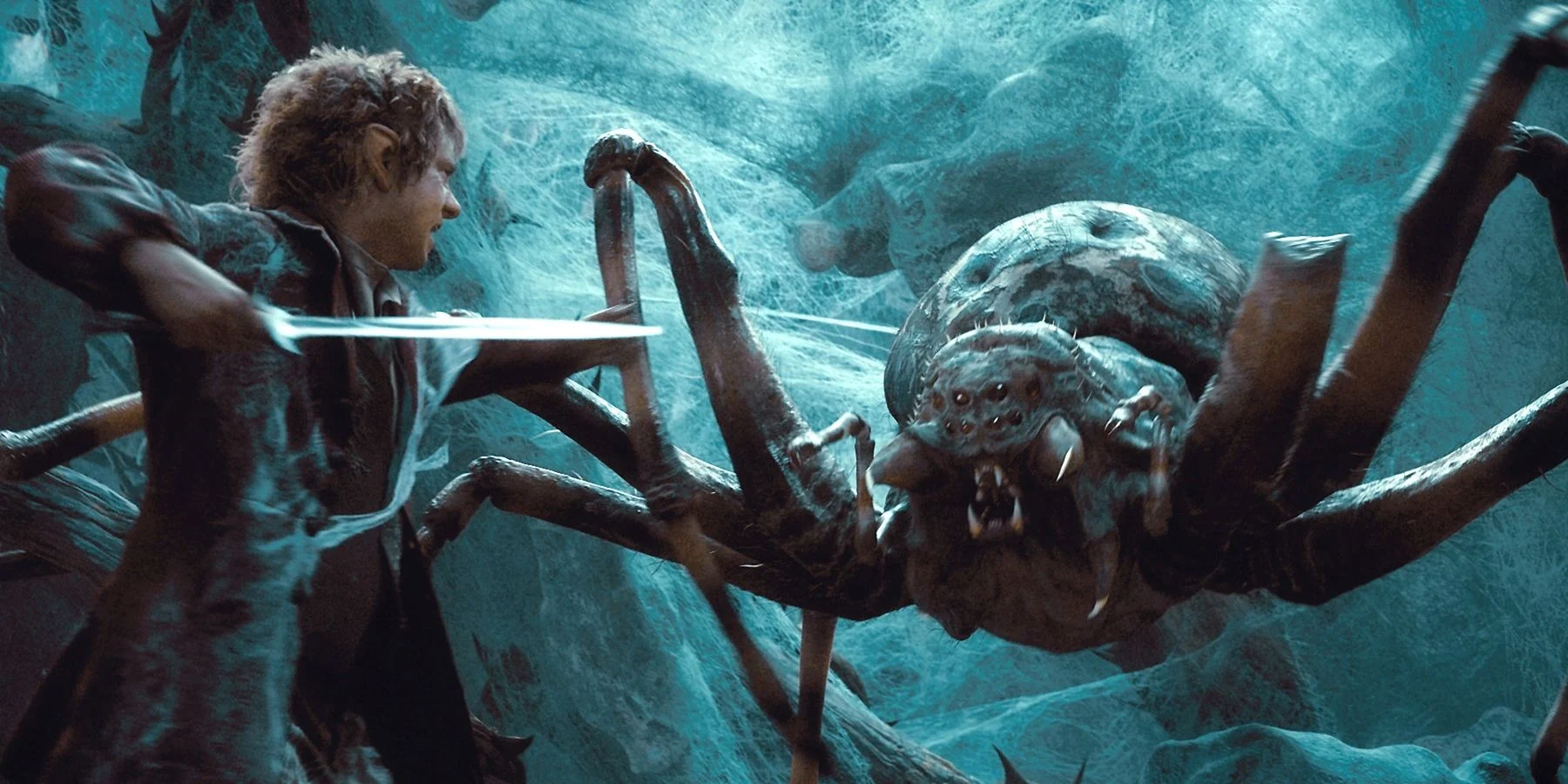
Shelob was a gigantic spider and the greatest progeny of the primordial spider Ungoliant. She dwelt in Mordor during the Third Age and was known to graze recklessly, preying on the population. Frodo Baggins and Samwise Gamgee met her on their journey to destroy the One Ring. Shelob’s early life is unknown, with the exception of the supposition that she was born in the Ered Gorgoroth and was Ungoliant’s “last child.”
By the Second Age, she was frequently feasting on her own progeny, and that at some time after departing Beleriand, but long before Sauron captured Mordor for himself, she spun a dark cave in the Ephel Duath, above Cirith Ungol in the passes above Minas Morgul. For hundreds of years, she lived there, weaving a labyrinth of webs amid a network of caverns to better catch her victims. Shelob, being an Ungoliant spawn, would be categorized as a part spider, part demon, although in spider form.
Shelob, like other spiders, has spindly legs, several eyes, and deadly chelicerae. She normally paralyzed her prey with her paralyzing sting, allowing her to feed on her victims at her leisure, but she could also crush them to death by dropping on them quickly. Her skull was crisscrossed with scars, and she was missing many eyes.
The Orcs see that she normally paralyzes her victims and traps them in webs, keeping them alive for a short period of time before murdering them. Shelob originally appears in Peter Jackson’s The Lord of the Rings: The Return of the King, rather than in The Two Towers, since if she had arrived in The Two Towers, there would have been nothing for Frodo and Sam to confront in the final film. Shelob appears in this depiction as a CGI-generated beast about eight feet long and seventeen feet broad.
BALROGS
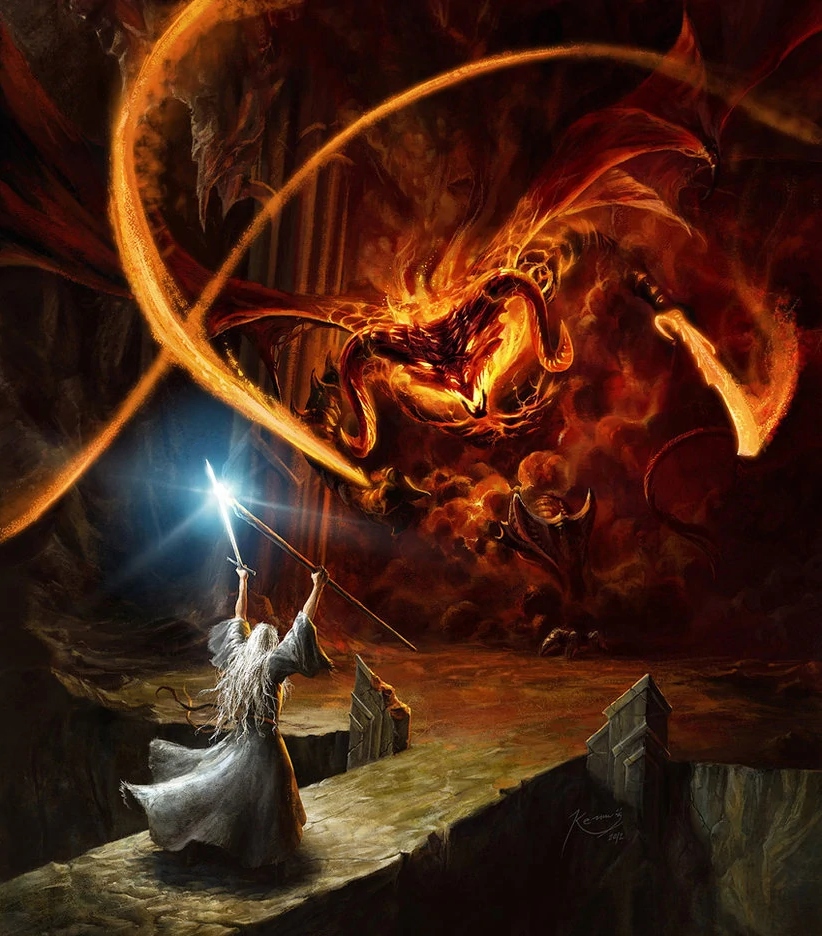
Balrogs, also known as Valaraukar, were Maiar who were enticed and corrupted into serving Melkor. Originally, in undocumented ancient days, the Balrogs were fiery Maiar who were enticed to join Melkor’s cause by his strength and magnificence. The Balrogs and other monsters in Melkor’s service once lived in Utumno, but following their master’s defeat during the War for the Sake of the Elves, they fled to Angband and hibernated there.
Balrogs first appeared during the Years of the Trees, when Melkor and Ungoliant invaded Valinor and destroyed the Two Trees. The Balrogs had stayed in Angband’s pits by this time. Morgoth returned to the ruins of Angband to re-establish his control over Middle-earth after destroying the Trees with Ungoliant.
After an argument with Ungoliant, she attacked him, and Morgoth let forth a tremendous yell, rousing the Balrogs from their slumber. The Balrogs chased Ungoliant away in a hail of fire and prepared to follow her. They were, however, stopped by Morgoth and returned to Angband, which was soon rebuilt.
Balrogs were very strong beings. Ungoliant, a gigantic creature powerful enough to swallow the fruits of Telperion, which provided light for billions of stars, was driven away by just seven Balrogs. Durin’s Bane, a single Balrog, drove the Dwarves of Khazad-dûm from their ancient and magnificently fortified home, which was the greatest kingdom of Dwarves that had ever existed.
It also fought Gandalf and broke the side of a mountain with brute force. The Balrogs were so physically nimble that their passage was often described as a “tempest of fire.” Gothmog battled and defeated Fanor, an Elf powerful enough to control the light of the two trees. He also wreaked havoc on the city of Gondolin, which was teeming with powerful Elves.
SMAUG
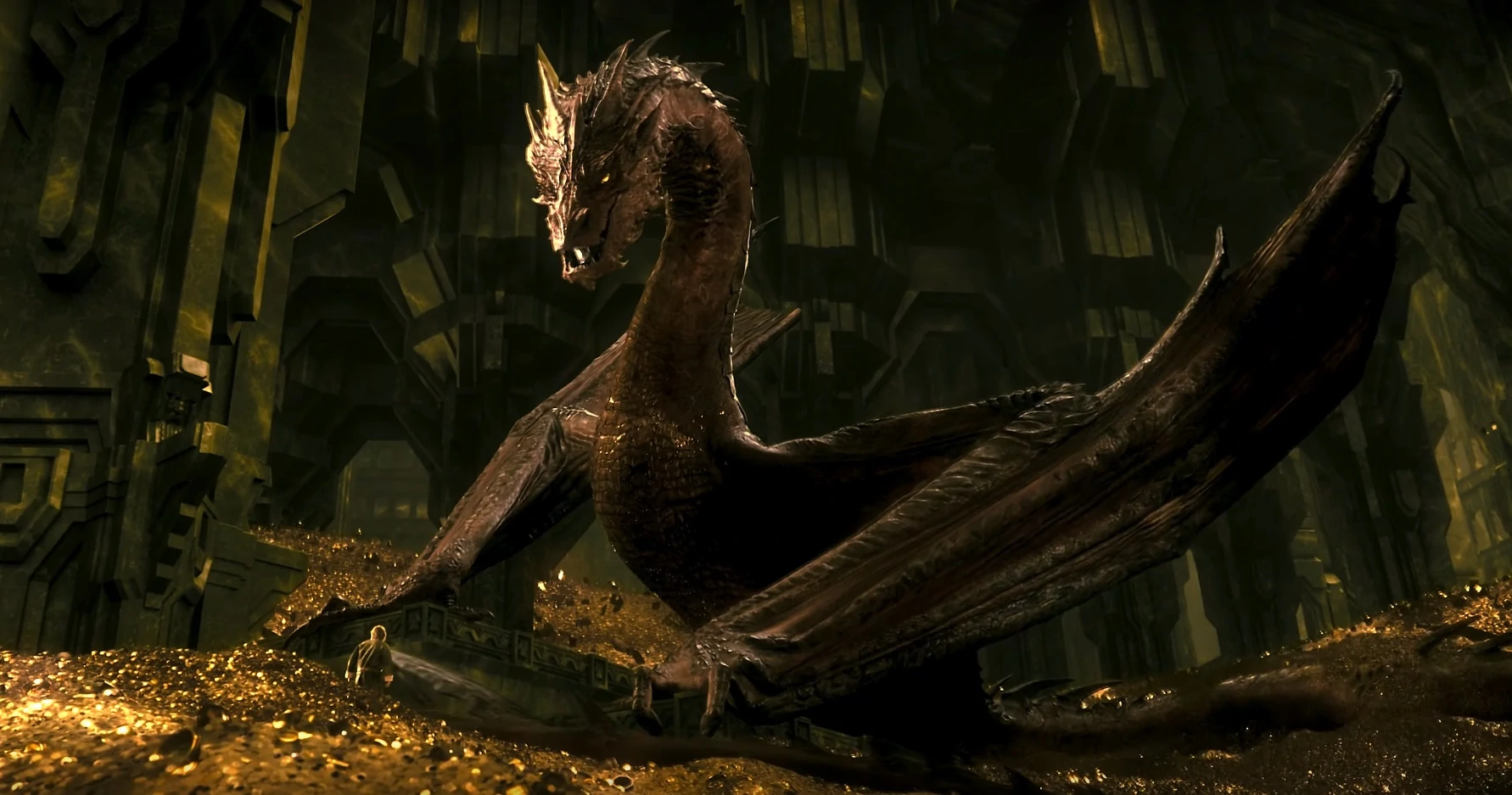
Smaug was a Third Age fire-drake who was regarded as Middle-final earth’s “great” dragon. He was captivated by the vast wealth collected by the Lonely Mountain Dwarves during King Thrór’s rule. He destroyed the surrounding city of Dale and took control of the Lonely Mountain, forcing the remaining Dwarves into exile.
Smaug kept the treasures of the Lonely Mountain to himself for 171 years, until a group of Dwarves managed to enter the mountain and rouse him from his slumber. Smaug, assuming correctly that the Dwarves had received aid from the men of Lake-town in accessing the Lonely Mountain, fled the mountain to wreak havoc on Lake-town, nearly destroying it before being murdered by Bard the Bowman.
Though he was certainly smaller than Ancalagon, the largest known dragon to have existed, it is questionable if Smaug, the largest specimen in the Third Age, could compete in power with his forebears of average size in the First Age. Smaug, as a fully-grown dragon, was both large and strong, with physical strength capable of smashing stone with ease, as seen by his attack on the Lonely Mountain.
He could fly owing to his huge wings and breathe jets of burning hot flame and vapor from his lips and nose. Smaug’s gigantic appearance, like that of many other dragons in Middle-earth, belied strong senses and a frighteningly clever mind. Tolkien speculates but does not confirm, that Smaug was born in the Third Age and came from Withered Heath, like the other dragons of the time.
AZOG
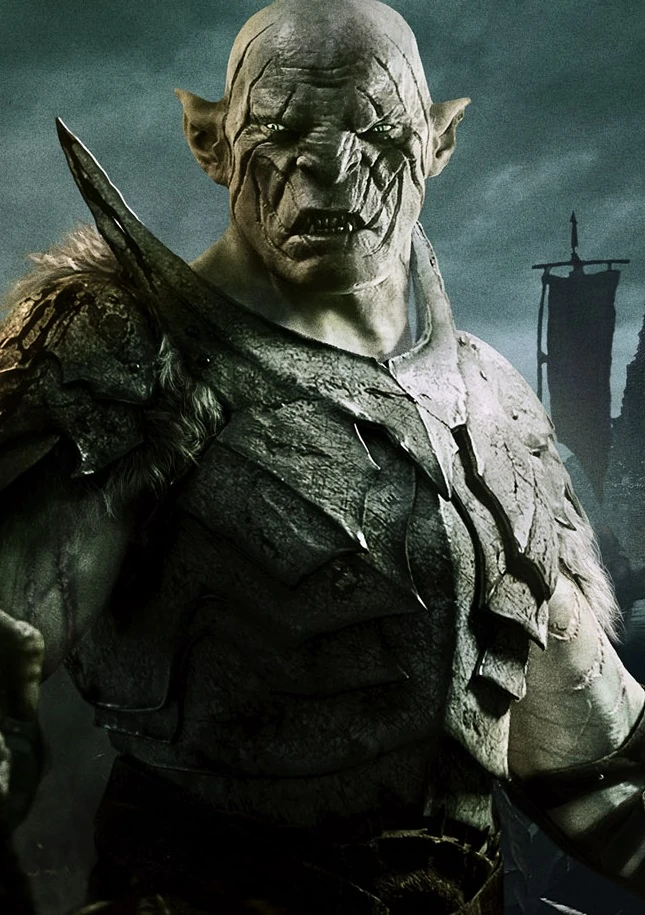
Azog was a Third Age Orc-lord who commanded the Moria tribes until he died in TA 2799. He was the one who assassinated the Dwarven King Thrór. The origins of Azog are unclear. He appeared in history in the year TA 2790 as a result of King Thrór’s ambition to return back and maybe reconstruct the destroyed realm of Khazad-dûm. Thrór met Azog there, and Azog decapitated him, carving his name in Thrór’s head and tossing the body back to the king’s companions, the Dwarves.
Azog requested that the Dwarf Nár convey a message to Thrór’s people, warning that beggars who venture to enter Moria and try to steal would suffer the same fate. Azog then declared that he had murdered Thrór and was now king of Moria. His name, written in runes on Thrór’s brow, became engraved on the hearts of the Dwarves, fueling their rage. Azog is an orc nationalist who appreciates the Orcs’ heritage.
He also despises Common Speech, for even though he understands it, he never speaks it, even while conversing with individuals who do not speak Orkish. Although he seemed to accept Black Speech, as he conversed with Sauron in that tongue.
Azog is very intolerant of failure and exercises absolute authority over his Orc minions. He is revealed to be highly cruel, insulting Thorin in their second meeting by declaring that his father “reeked of the smell of terror” in order to provoke him into striking. He appeared to love seeing the wargs assault the dwarves as well.
FELL BEAST
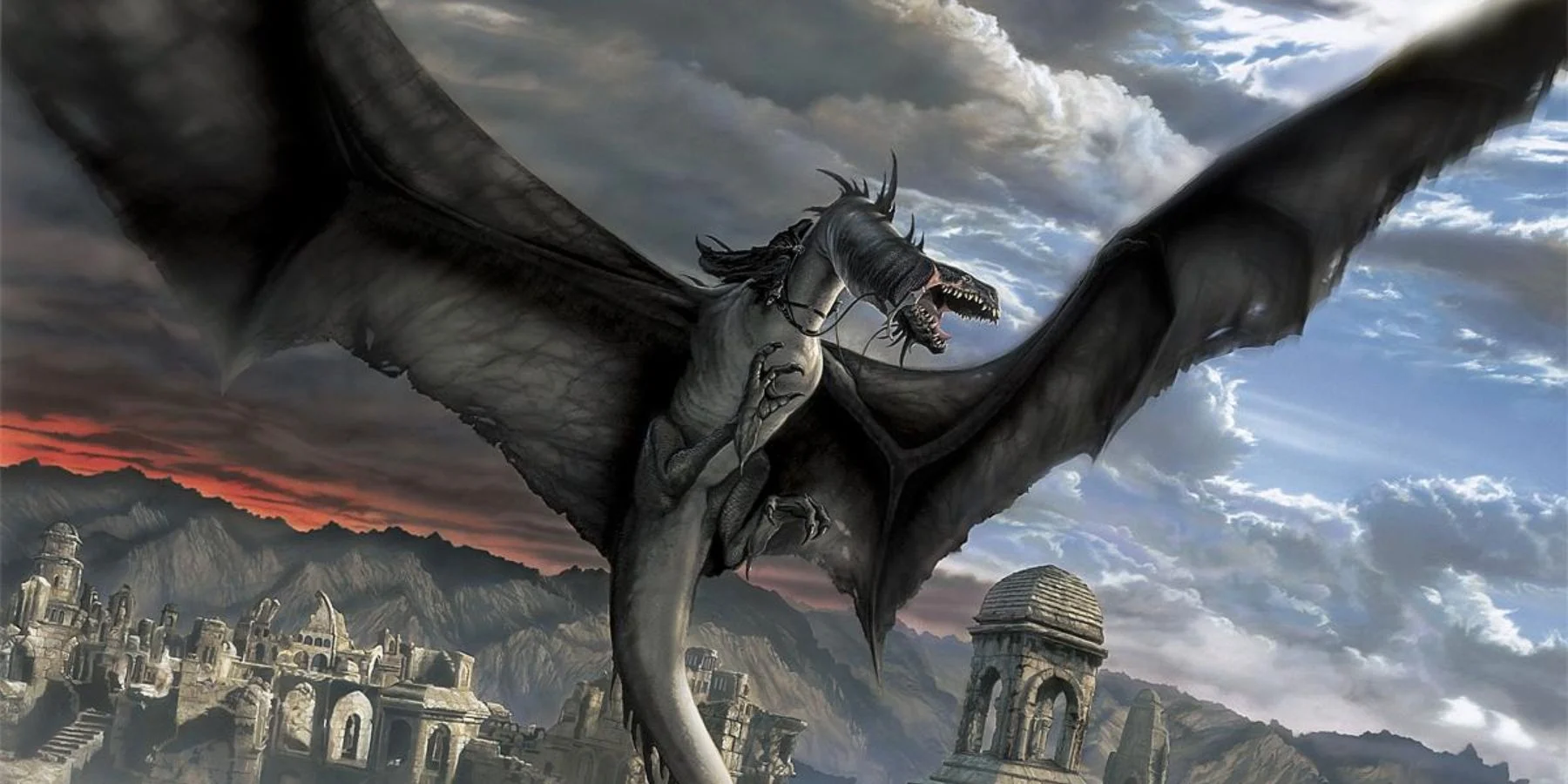
In The Lord of the Rings, the name “Fell beast” refers to the flying animals that the Nazgûl rode after being unhorsed at the Ford of Bruinen. The fell beasts were depicted as enormous, winged monsters without feathers, having pinions between their horned fingers and a smell emanating from their bodies.
It is conceivable that fell beasts originated in “an ancient world.” These fell beasts were produced by the evil lord Sauron and given to the Nine as mounts. The Nine Nazgûl rode coal-black horses when they sought and pursued Frodo. The flood created by Elrond’s mediation destroyed these steeds at the Ford of Bruinen, and the Nine also perished in the river. Unseen, they returned to Mordor in the following months and were granted “fell beasts.”
The Fellowship of the Ring saw “a big winged thing, blacker than the pits in the darkness” after leaving Lothlórien and camped on the western side of the Anduin. When Legolas raised the mighty bow of Lórien and shot it with an arrow, it let out a “loud croaking scream” and fled into the Eastern shore’s shadow.
While going through the Dead Marshes, Frodo, Sam, and Gollum encountered a fell beast, and in their terror, Gollum warned of “wraiths on wings.” A fell beast swooped over Edoras and stooped just above Meduseld, according to the chieftain of Harrowdale. It was characterized as darkness in the form of a terrible bird.
Following this, Gandalf instructed the Rohirrim to gather in Dunharrow rather than outside Edoras to avoid the assault. The Witch-king of Angmar appeared in combat riding on a fell beast during the Battle of the Pelennor Fields. When he gravely wounded King Théoden on the battlefield, Éowyn shed her Dernhelm appearance and slaughtered the fell beast.
OGRES
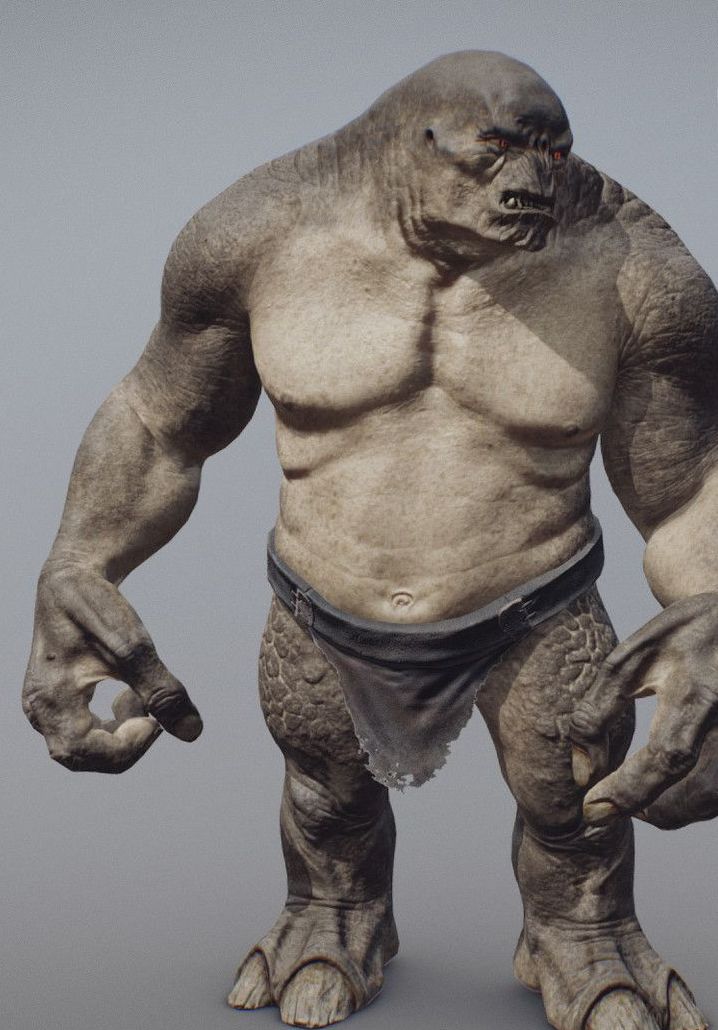
The Ogres were more like a mythological creature in the Hobbit tradition rather than an entity and were only referenced once, in The Hobbit. Ogres were discussed in the context of Bilbo Baggins and Gollum’s Riddle Game. Bilbo attempted to think of “all the giants and ogres that he had heard of” after Gollum asked a riddle about what “ruins kingdoms” and “beats great mountains down.” However, none of them was damaging enough to fulfill the definition of the riddle, as the solution was time itself.
It’s also likely that, like Giants and the name “fairy,” they were simply abandoned when Tolkien’s legendarium evolved and grew. Ogres make a brief appearance in The Hobbit: The Battle of the Five Armies. They are said to be modeled on Half Trolls, who are said to be midway between the largest orcs and the smallest trolls. They were shock warriors and Troll leaders in Azog’s Army. One was in charge of a swarm of catapult trolls.
Several Ogres emerge in Dale, with two of them being killed by Bard the Bowman. One of them, in particular, had an extremely short left arm, although his right arm, which held his club, was more appropriate to his body size.
Azog commands a squad of Ogres to destroy the Dwarvish war chariots at the start of the conflict in the expanded version. The Ogres complete their task by destroying the machinery and slaughtering Dwarves with their maces. Azog subsequently dispatches another squad of Ogres to destroy the chariot used by Dwalin, Balin, Fili, and Kili on their journey to Ravenhill. The chariot’s spiky wheels, however, decapitate all of the attacking Ogres.
WARGS
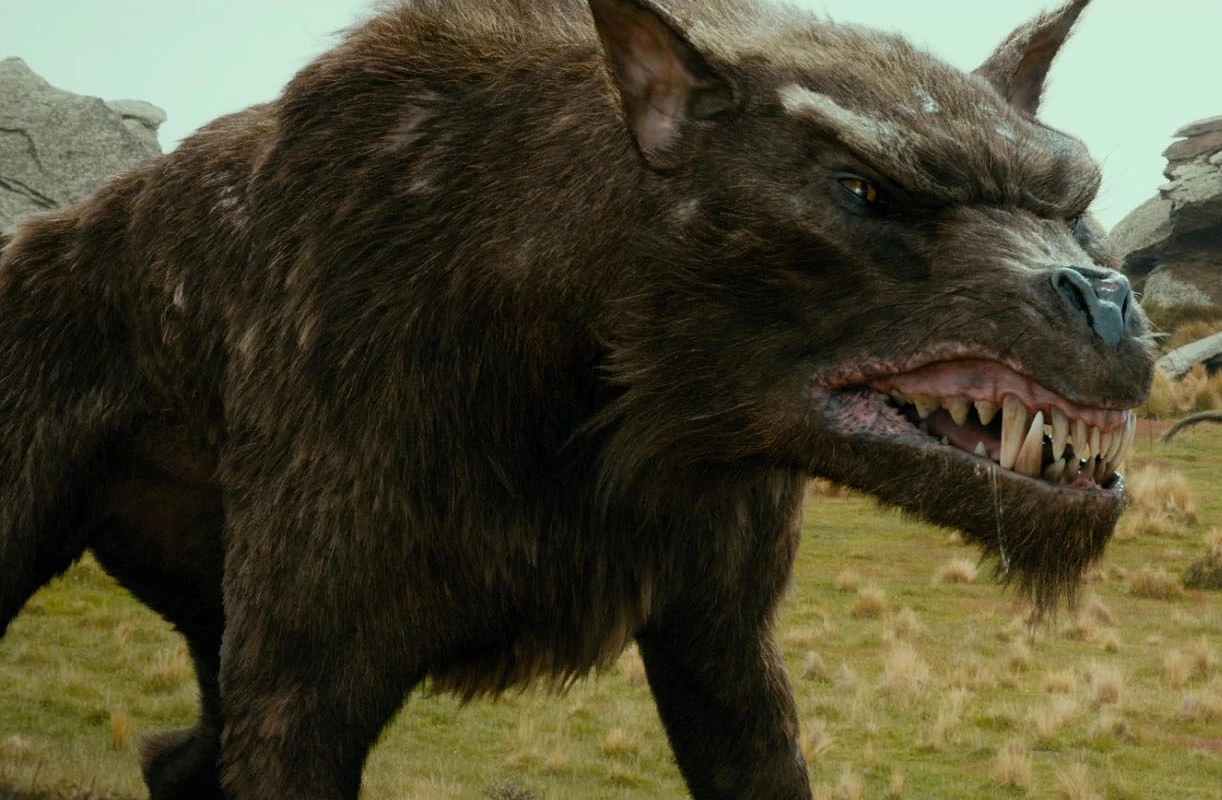
Wargs were the breed of wolves that resided in the Misty Mountains. Wargs are depicted as massive, clever, and malicious wolves. In the Third Age, some were seized and employed by the Orcs of Isengard and Mordor, while others were loyal to the northern Orcs of the mountains. They initially appear in The Hobbit, assaulting Thorin and company on their way east from the Misty Mountains.
A scout reported that “wolf-riders” were out in the valley during Théoden’s withdrawal to Helm’s Deep from the menace of Isengard in TA 3019, although Wargs were not expressly mentioned. In TA 2941, a group of Wargs planned to meet the Misty Mountains goblins and launch an attack on several adjacent settlements in order to eject the Woodmen and capture some slaves.
As the pack neared the rendezvous location east of the mountains, they came upon Thorin’s Company, as well as Gandalf and Bilbo Baggins, who had just escaped from the same goblins. Gandalf had predicted this by advising the Company to climb a nearby grove of trees. This was accomplished, and Dori rescued Bilbo from the clutches of the Wargs just in time. The Wargs ringed the glade and blocked the Dwarves from descending, mistaking them for Woodmen comrades.
Gandalf lighted up pinecones and tossed them at the Wargs, driving them away. Because it was high summer and there had been no rain on this eastern side of the mountains for some time, the wolves that had caught fire escaped into the forest and set it ablaze in numerous spots.
Goblins quickly emerged and set fire to the woods. The Great Eagles arrived soon after and saved the Company. Soon after the news of Smaug’s death spread throughout Middle-earth, Wargs and goblins banded together to claim the Lonely Mountain, but were destroyed in the Battle of Five Armies by an alliance of Dwarves, Elves, Lake-men, and Great Eagles.
OLOG-HAI
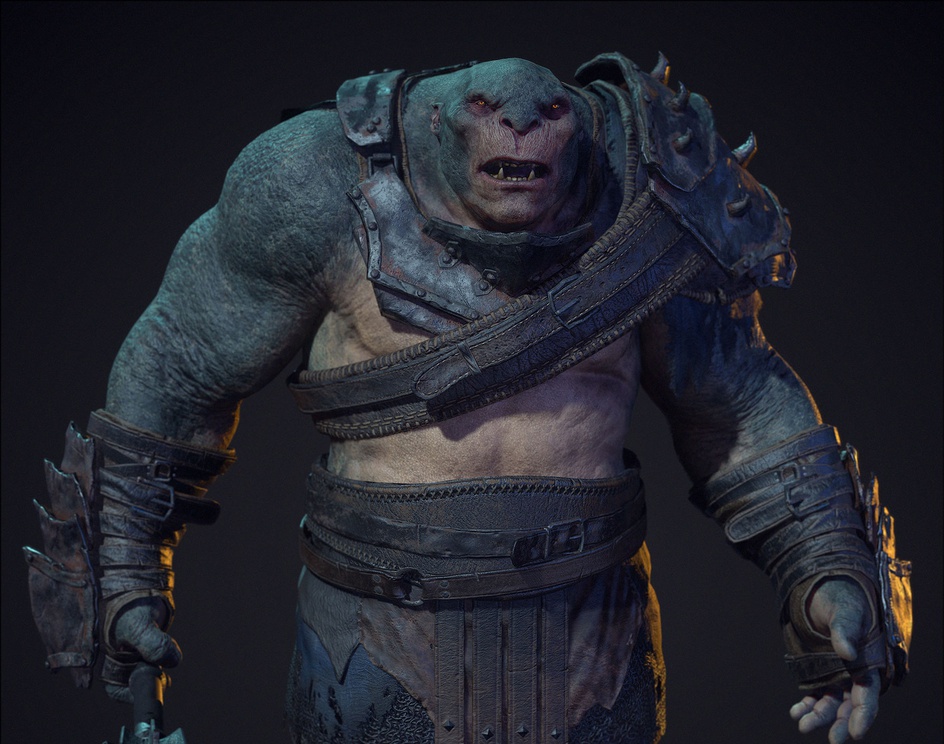
The Olog-hai were an evolved kind of trolls who arose in Middle-earth during the latter days of the War of the Ring under Sauron’s service. The Olog-hai are not named in The Lord of the Rings, and the phrase appears only in the appendices. Sauron produced them in the late Third Age, probably for the same purpose Saruman raised the Uruk-hai, to enhance and make them less vulnerable to sunlight.
They mostly dwelt in Mordor and southern Mirkwood. They are, however, mentioned in the Battle of the Black Gate, as Pippin saves his companion Beregond from one. The Olog-hai are depicted as being taller than a man, clothed in spiky scales, wielding war hammers, massive swords, or spiked maces, and bucklers, and possessing claws and, on rare occasions, tusks. It is stated that all Olog-hai were killed following the War of the Ring.
Olog-hai was a Black Speech term that simply meant “troll-folk.” They seldom talked, and only in Mordor’s Black Tongue. Olog-hai lacked normal troll flaws: they were extremely clever and, unlike their colleagues, could travel under the Sun. As a result, some considered them to be Orcs, similar to the Uruk-hai but descended from trolls.
In the film The Lord of the Rings: The Return of the King, Olog-hai were portrayed as giant trolls dressed in black armor and carrying the war hammers alluded to in the appendices. During the Siege of Gondor, they were largely utilized as shock soldiers once the gates of Minas Tirith were breached, though an Olog-hai subsequently duels and almost kills Aragorn at the Black Gate.
They vary from the other trolls in the movies in that they have forward-facing eyes and hair on their bodies. They’re often grey, dark green, reddish-brown, or black in hue. They have twenty-four fangs and stand between ten and fifteen feet tall, as opposed to the eight to 10 feet of typical Trolls.
Their eyes are also a brilliant orange color, indicating their wicked connection to Sauron. Attacking Olog-hai uses breastplates, vambraces, pauldrons, and helmets, as well as maces, hammers, or massive swords. Despite their small stature, they were extremely swift and competent enough to parry and participate in swordplay, as demonstrated by one who dueled Aragorn outside the Black Gate.
GOLLUM
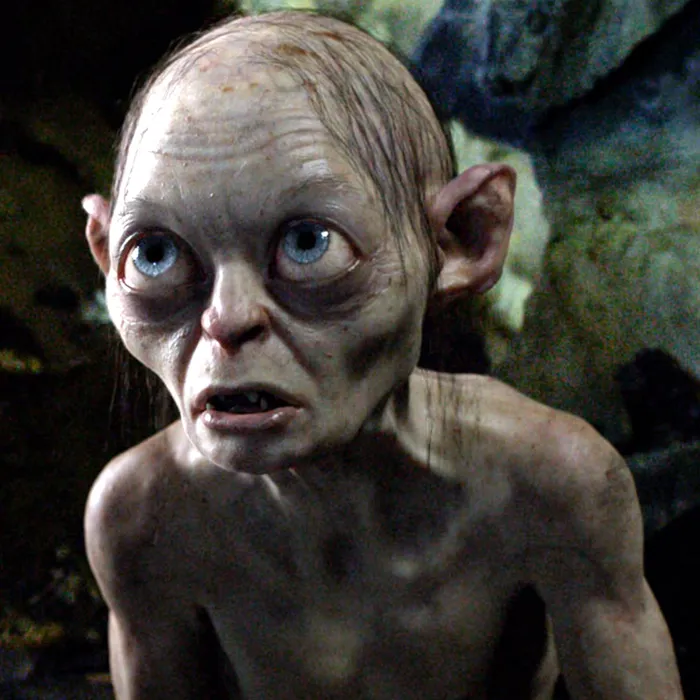
Sméagol, the original name for Gollum, was a Stoor, one of the three early Hobbit types. His gurgling, strangling cough inspired the moniker Gollum. The effects of owning the One Ring prolonged his life well beyond his nature. Sméagol died at the age of 589, an astonishing age for a creature that was once a Hobbit, but he had been distorted and twisted in body and mind by the taint of the Ring.
His main objective was to reclaim the Ring that had bound him, which he pursued for many years after Bilbo Baggins discovered it in Gollum’s cave beneath the Misty Mountains. Inadvertently, Gollum would play a critical part in the final Quest for the Ring. Tolkien made no mention of his stature in the original edition of The Hobbit, prompting numerous artists to depict him as exceedingly big.
Tolkien discovered the error and explained in subsequent editions that he was of a typical hobbit stature, and there is a mention of Sam being “a trifle shorter in height” than he is in “The Lord of the Rings.” Tolkien portrays Gollum as dark, bone-white, or sallow; at one point, the Rangers of Ithilien misidentify him as a tailless black squirrel. He is described as “dark” by Gorbag and Shagrat.
Gollum was a survivalist with great eyesight and a fast hand, which made him an exceptional fisherman. He could find and capture fish in practically any light and water conditions. He is very briefly mentioned in The Lord of the Rings: The Fellowship of the Ring,2001, but he becomes a pivotal figure in The Lord of the Rings: The Two Towers in 2002 and The Lord of the Rings: The Return of the King in 2003 The groundbreaking CGI character was built around Serkis’ voice, movements, and expressions, sometimes through the use of a motion capture suit that recorded his movements and applied them to the digital character, and sometimes through the more painstaking process of digitally “painting out” Serkis’ image and substituting it with Gollum’s, giving the illusion of a small, skeletal, thin, and gaunt creature with large, beady eyes and small strands of brown hair.
